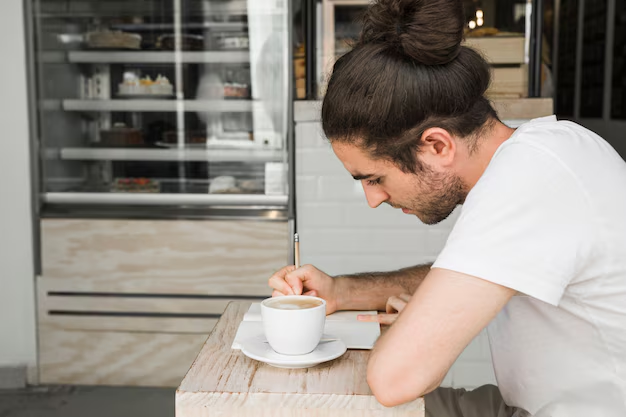Fine-tuning Your Whirlpool Refrigerator: Getting the Water Dispenser Just Right
A Whirlpool refrigerator stands as a staple in many modern kitchens, known for its reliability and efficiency. One feature that homeowners appreciate is the water dispenser. However, like any other appliance part, it sometimes needs a little adjustment to work at its best. Whether your dispenser is releasing water too fast, too slow, or perhaps inaccurately filling your cup, calibrating it might be the solution you need. Throughout this guide, we will delve into the ins and outs of calibrating your Whirlpool refrigerator water dispenser, offering practical insights and step-by-step instructions to ensure smooth operation.
Understanding Your Water Dispenser
Before diving into calibration, it's crucial to understand the mechanics of your Whirlpool refrigerator's water dispenser. The dispenser provides chilled water on demand, utilizing a water filter, control board, and actuating switch to function seamlessly. Over time, usage and water pressure can lead to inconsistencies in water flow, necessitating a calibration.
Common Issues in Water Dispensers
Water dispensers may occasionally display issues like inconsistent water flow, irregular filling levels, or delayed response when the lever is pressed. These are often indicators that a calibration may be necessary.
Reasons for Calibration
Calibration can resolve issues like:
- Inconsistent water flow or pressure
- Unreliable cup fill levels
- Delayed dispenser response
Understanding these components will ease the process, allowing you to calibrate with confidence.
Step-by-Step Guide to Calibrating Your Water Dispenser
Calibration is a straightforward process that can save you from future frustrations. Here's how you can achieve a perfectly calibrated water dispenser.
Preparation Steps
- Gather Your Tools: For calibration, you typically need just a measuring cup and your refrigerator's user manual.
- Safety First: Ensure that your hands are dry, and the area around the refrigerator is free from spills.
Calibration Process
- Access the Menu: On models with a digital screen, locate the menu button. You may need to navigate through various options to find the calibration setting. For non-digital models, refer to the user manual.
- Start Calibration: Select the calibration option. Depending on your model, you may need to press and hold specific buttons to begin.
- Measure Dispensed Water: Use your measuring cup to collect the water released by the dispenser. This helps to see how accurately it's dispensing.
- Adjust Settings: If the amount measured does not match the expected output (usually specified in the manual), adjust the setting. This could involve increasing or decreasing the flow setting on the menu.
- Re-Test: After adjustment, dispense water again to ensure the changes align with your preferences.
- Save the Settings: Once satisfied, ensure the settings are saved. Typically, the refrigerator will prompt you to confirm changes.
Important Tip
Ensure your water filter is clean: A clogged filter can mimic calibration issues. Always check and replace filters as recommended by the manufacturer.
Enhancing the Performance of Your Water Dispenser
Calibration might solve most issues, but holistic maintenance ensures longevity and optimal performance. Here are some additional practices to keep your water dispenser in top shape.
Regular Maintenance Practices
- Filter Replacement: Regularly replace your water filter as recommended (usually every 6 months).
- Keep the Nozzle Clean: Wipe down the dispenser nozzle with a damp cloth regularly to prevent buildup.
- Check Water Line for Kinks: Ensure the line connecting the refrigerator to your water supply is free of obstructions and kinks.
Enhancements for Better Use
- Smart Water Bottles: Consider using smart bottles or containers that allow you to measure water more accurately and are compatible with dispensing systems.
- Regular Usage of Calibration: Make calibration a routine check-up — perhaps when you replace your water filter.
Troubleshooting Common Dispenser Problems
Even after calibration, you may experience persistent issues. Here's a look at some common problems and recommended approaches to troubleshoot them.
Water Leaks
Solution:
- Check connections of the water line.
- Inspect for any visible damage in seals or gaskets.
Low Pressure
Solution:
- Verify water pressure from your home supply.
- Ensure there are no obstructions in the water line or filter.
Quick Reference Summary
Here’s a condensed version of actionable steps for maintaining a well-calibrated water dispenser:
| Issue | Cause | Solution |
|---|---|---|
| Inconsistent Water Flow | Incorrect calibration settings | Re-calibrate using steps mentioned |
| Delayed Response | Slow water line or clogged filter | Check line, clean, or replace filter |
| Uneven Water Distribution | Obstructions or faulty mechanism | Clear obstructions, inspect mechanism |
Key Takeaways 🔑
- Regular calibration ensures efficient and accurate water dispensing.
- Consistent maintenance like cleaning and filter replacement supports longevity.
- Always re-test after adjustments to confirm successful calibration.
- Troubleshoot wisely; check simpler issues like clogs before assuming complex faults.
Concluding Thoughts
Calibrating your Whirlpool refrigerator's water dispenser is a simple process that promises a host of benefits, from improved appliance performance to better user experience. Through regular calibration and maintenance, you not only enhance the functionality of your refrigerator but also extend its lifespan. By following these steps and tips, you're well on your way to enjoying a perfectly calibrated water dispensing experience. Remember, the key lies in understanding your appliance and addressing its needs proactively and consistently. This commitment will pay off with a well-functioning, reliable water dispenser every time you reach for a chilled glass of water.
